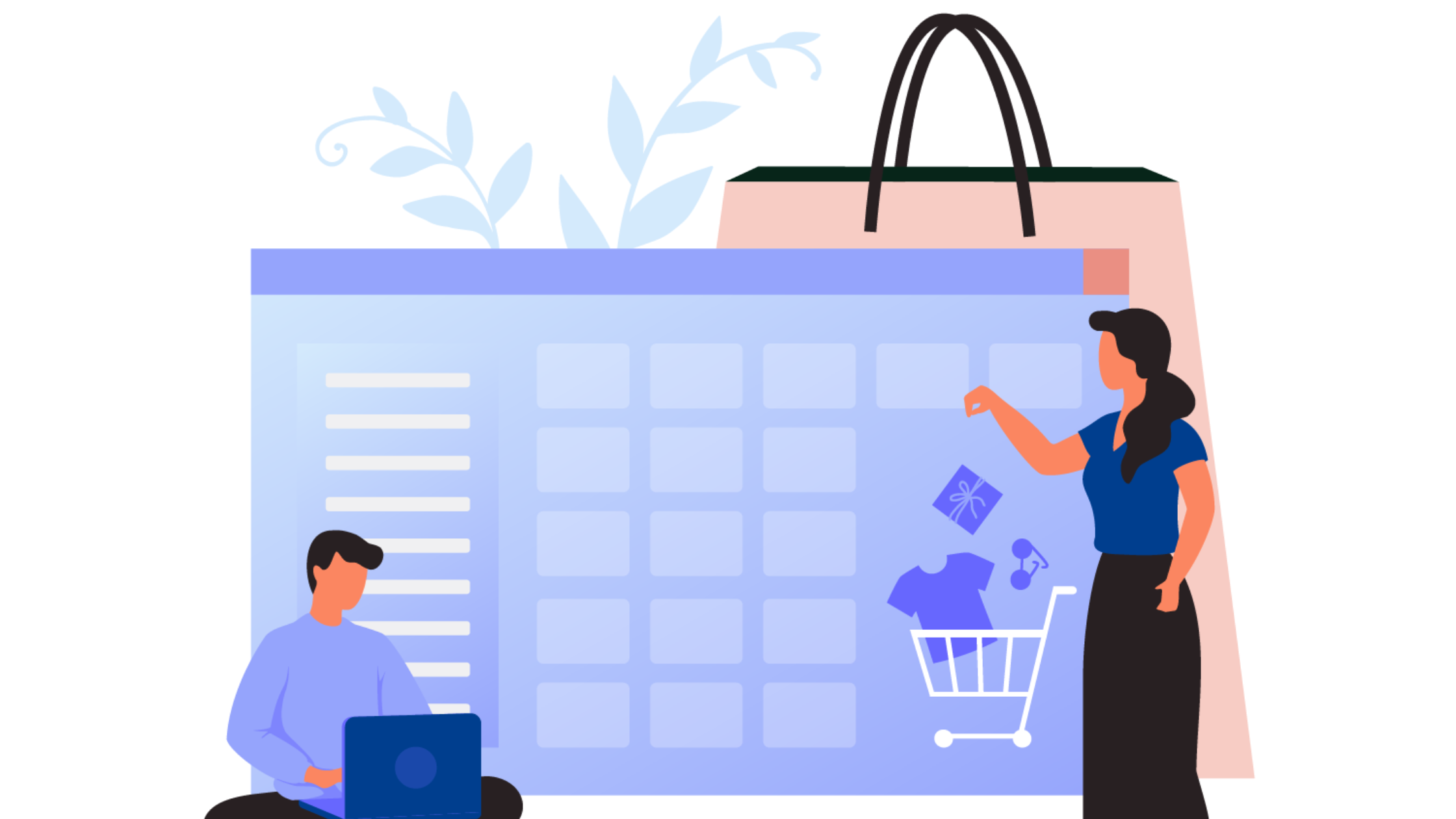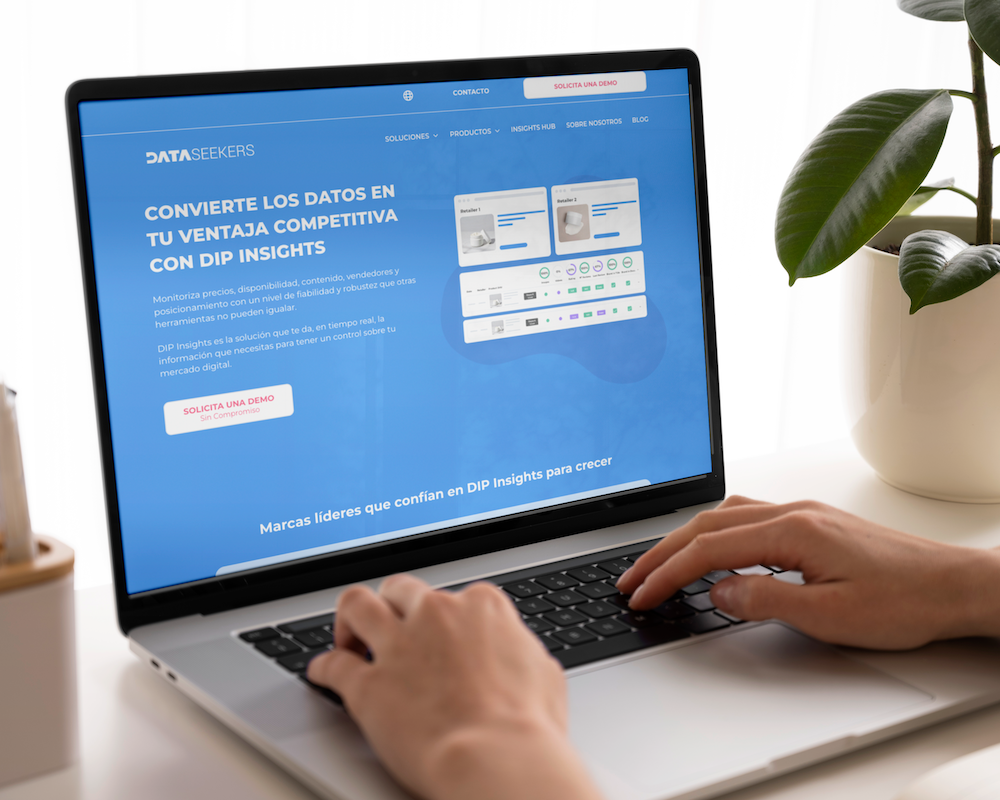Apply at Christmas what you learned on Black Friday
Black Friday 29/12/2022
WHAT WE EXPECTED
With the worst of the Pandemic behind us, in 2022 we faced a new Black Friday with uncertainty and low expectations, despite the need to recover the sales lost over the last two years. The current context certainly did not bode well for the campaign: the war in Ukraine, inflation, the economic recession, the loss of purchasing power....
In this respect, the forecasts were not very encouraging, even if the purchase intention in our country was around 72% (only below that of Italy in Europe):
We were therefore faced with a buyer profile determined to avoid unnecessary purchases, eager for discounts as never before, and even willing to give up their preferred brands in exchange for more attractive offers.
In addition to these data, there was another, also negative, but from which, paradoxically, a somewhat more optimistic conclusion could be drawn, since it signified the existence of ample room for improvement:
Beyond the figure itself, it is the causes of this dissatisfaction that we had to learn from and work on:
WHAT HAS HAPPENED
We could go on and on about the different points of view provided by countless experts, but with the first results coming to light, we can see once again that reality is always capable of surpassing any forecast. The truth is that the Black Friday / Cyber Monday 2022 campaign has been very positive, even record-breaking in certain countries, such as the United States, where there has been a 2.3% increase in sales (9.12 billion dollars).
In Spain, the data has also been good and very revealing:
WHAT CHRISTMAS HAS IN STORE FOR US
In 2022 Black Friday and Cyber Monday have definitely established themselves as major sales peaks, but there is life after these popular dates. And although 95% of consumers have taken advantage of them to start buying their Christmas gifts, we have the opportunity to make the most of what is left of the Christmas campaign, which is not little, and we must do so by applying what we have learned during their commercial prequel.
Most wanted
According to the giant Shopify, beyond the segment, the BBB (Good, Nice, Cheap), loses strength. 76% of its consumers claim to be committed to quality and look for durable products that won't break. Likewise, 84% say they will compare before buying. And they will do so preferably via mobile (75% mobile vs. 27% desktop).
As for the most sought-after products, the popularity of products related to animal care and the increase in sales recorded by certain fashion websites is striking (Zara, for example, reported a 230% increase on Black Friday compared to the previous week). In any case, let's look at the detail by segment:
Where people shop the most
In absolute terms, Amazon remains the leader. On Black Friday, its number of users increased by 30% compared to the previous Friday. However, if we analyze in percentage terms, there are other retailers that have grown even more:
RECOMMENDATIONS
The importance of being competitive
The market is an increasingly complicated environment, especially considering the delicate economic context in which we find ourselves. Consumers are clear about what they want and will search tirelessly until they get it. We have to be competitive, yes or yes. And to do so, we cannot afford to neglect our competitors, to not have visibility on the prices of our products on the different sites, to miss out on the advantages of our catalog or to suffer too much from its shortcomings. Relying on a tool that allows us to control both aspects, prices and catalog (our own and others') is essential.
Real-time monitoring of commercial peaks
Commercial peaks are here to stay and now comes another one, and a strong one. Every day, even every hour, changes occur and we cannot ignore them. Coinciding with these periods of high intensity, we must reinforce monitoring. Data Seekers' DIP Insights platform, with its Real Time Monitoring, allows you to track your prices and those of your competitors on an hourly basis, in addition to configuring the automated alert system to notify you of any relevant change or to establish business rules to nurture dynamic repricing. In this way, if a change is detected that matches the criteria of your business rule, prices will be automatically modified.
Keep an eye on marketplaces
Amazon, Ebay, Rakuten, Aliexpress, Walmart... We have already seen it. They are the lords and masters of the market and all the information they contain is worth its weight in gold. It is essential that we carry out an intensive tracking of their catalog, their prices, their product availability, their sellers... Not only will you be able to fine-tune your pricing strategy, but you will also identify gaps or competitive advantages in your catalog, locate unauthorized sellers and counterfeit products, etc.
Optimize your points of sale at all levels
When we say at all levels, we mean at all levels. On the one hand, we must ensure that retailers' websites are properly optimized in terms of load and user experience. Both in its desktop version and in its mobile version. It is striking to have to remember this, but if we look at the reasons that caused consumer dissatisfaction in 2021, it may not be so obvious.
Let's take care of the catalog and stock. Our solutions allow us to know the state of demand and, based on this data, to build our catalog and increase stock if necessary. We cannot afford to run out of a product that is in high demand. We guarantee consistency between points of sale. The same product cannot be displayed differently depending on the site. Digital Shelf control solutions, such as DIP Insights, help ensure that the names, descriptions, images and, in general, any material associated with a given product is consistent, regardless of where we are trying to purchase it. In addition, you will also be able to see the degree of prominence they enjoy, and their positioning in search results, within a given site.
Reviews provide us with extra data
Monitoring what consumers think about our product, both quantitatively (ratings) and qualitatively (reviews), is an efficient way to collect consumer data without having to resort to complex market research.
CONCLUSIONS
In short, we expected little from this Black Friday due to the current global situation, but, once again, the reality has exceeded all forecasts. As we have already mentioned, the Black Friday / Cyber Monday 2022 campaign has been very positive, breaking records in some countries. We still have a week left of the Christmas campaign and we must apply what we have learned:
Looking ahead to 2023, a year that will pose many challenges, we must take these points into account, and Data Seekers, through our DIP Insights tool, will be happy to help you.
With the worst of the Pandemic behind us, in 2022 we faced a new Black Friday with uncertainty and low expectations, despite the need to recover the sales lost over the last two years. The current context certainly did not bode well for the campaign: the war in Ukraine, inflation, the economic recession, the loss of purchasing power....
In this respect, the forecasts were not very encouraging, even if the purchase intention in our country was around 72% (only below that of Italy in Europe):
- 80% of consumers worried about price rises
- 75% of consumers fearful of a prolonged economic downturn
- Consumption down by up to 18%
- Average consumer spending in Spain estimated to be 13% lower than in 2021
We were therefore faced with a buyer profile determined to avoid unnecessary purchases, eager for discounts as never before, and even willing to give up their preferred brands in exchange for more attractive offers.
In addition to these data, there was another, also negative, but from which, paradoxically, a somewhat more optimistic conclusion could be drawn, since it signified the existence of ample room for improvement:
- Only 32% of consumers were satisfied with Black Friday in 2021
Beyond the figure itself, it is the causes of this dissatisfaction that we had to learn from and work on:
- Lack of stock
- Slow loading of web pages
- Poorly optimized purchasing processes
- Poorly identified products
- Delays in deliveries
WHAT HAS HAPPENED
We could go on and on about the different points of view provided by countless experts, but with the first results coming to light, we can see once again that reality is always capable of surpassing any forecast. The truth is that the Black Friday / Cyber Monday 2022 campaign has been very positive, even record-breaking in certain countries, such as the United States, where there has been a 2.3% increase in sales (9.12 billion dollars).
In Spain, the data has also been good and very revealing:
- Almost 3 out of 4 Spanish consumers have made purchases during the Black Friday / Cyber Monday weekend.
- 20% increase in traffic / number of users (11% if we talk about the whole week)
- 35% increase in average spending (slightly below the increase in other European countries such as Germany, UK, France or Italy).
WHAT CHRISTMAS HAS IN STORE FOR US
In 2022 Black Friday and Cyber Monday have definitely established themselves as major sales peaks, but there is life after these popular dates. And although 95% of consumers have taken advantage of them to start buying their Christmas gifts, we have the opportunity to make the most of what is left of the Christmas campaign, which is not little, and we must do so by applying what we have learned during their commercial prequel.
Most wanted
According to the giant Shopify, beyond the segment, the BBB (Good, Nice, Cheap), loses strength. 76% of its consumers claim to be committed to quality and look for durable products that won't break. Likewise, 84% say they will compare before buying. And they will do so preferably via mobile (75% mobile vs. 27% desktop).
As for the most sought-after products, the popularity of products related to animal care and the increase in sales recorded by certain fashion websites is striking (Zara, for example, reported a 230% increase on Black Friday compared to the previous week). In any case, let's look at the detail by segment:
- Toys (+285%)
- Smart home (+271%)
- Audio (+230%)
- Electronics (+221%)
- Exercise (+218%)
Where people shop the most
In absolute terms, Amazon remains the leader. On Black Friday, its number of users increased by 30% compared to the previous Friday. However, if we analyze in percentage terms, there are other retailers that have grown even more:
- Carrefour (+40%)
- MediaMarket (+70%)
- PC Componentes (+60%)
RECOMMENDATIONS
The importance of being competitive
The market is an increasingly complicated environment, especially considering the delicate economic context in which we find ourselves. Consumers are clear about what they want and will search tirelessly until they get it. We have to be competitive, yes or yes. And to do so, we cannot afford to neglect our competitors, to not have visibility on the prices of our products on the different sites, to miss out on the advantages of our catalog or to suffer too much from its shortcomings. Relying on a tool that allows us to control both aspects, prices and catalog (our own and others') is essential.
Real-time monitoring of commercial peaks
Commercial peaks are here to stay and now comes another one, and a strong one. Every day, even every hour, changes occur and we cannot ignore them. Coinciding with these periods of high intensity, we must reinforce monitoring. Data Seekers' DIP Insights platform, with its Real Time Monitoring, allows you to track your prices and those of your competitors on an hourly basis, in addition to configuring the automated alert system to notify you of any relevant change or to establish business rules to nurture dynamic repricing. In this way, if a change is detected that matches the criteria of your business rule, prices will be automatically modified.
Keep an eye on marketplaces
Amazon, Ebay, Rakuten, Aliexpress, Walmart... We have already seen it. They are the lords and masters of the market and all the information they contain is worth its weight in gold. It is essential that we carry out an intensive tracking of their catalog, their prices, their product availability, their sellers... Not only will you be able to fine-tune your pricing strategy, but you will also identify gaps or competitive advantages in your catalog, locate unauthorized sellers and counterfeit products, etc.
Optimize your points of sale at all levels
When we say at all levels, we mean at all levels. On the one hand, we must ensure that retailers' websites are properly optimized in terms of load and user experience. Both in its desktop version and in its mobile version. It is striking to have to remember this, but if we look at the reasons that caused consumer dissatisfaction in 2021, it may not be so obvious.
Let's take care of the catalog and stock. Our solutions allow us to know the state of demand and, based on this data, to build our catalog and increase stock if necessary. We cannot afford to run out of a product that is in high demand. We guarantee consistency between points of sale. The same product cannot be displayed differently depending on the site. Digital Shelf control solutions, such as DIP Insights, help ensure that the names, descriptions, images and, in general, any material associated with a given product is consistent, regardless of where we are trying to purchase it. In addition, you will also be able to see the degree of prominence they enjoy, and their positioning in search results, within a given site.
Reviews provide us with extra data
Monitoring what consumers think about our product, both quantitatively (ratings) and qualitatively (reviews), is an efficient way to collect consumer data without having to resort to complex market research.
CONCLUSIONS
In short, we expected little from this Black Friday due to the current global situation, but, once again, the reality has exceeded all forecasts. As we have already mentioned, the Black Friday / Cyber Monday 2022 campaign has been very positive, breaking records in some countries. We still have a week left of the Christmas campaign and we must apply what we have learned:
- Be competitive
- Real-time monitoring
- Track marketplaces
- Maintain consistency between our points of sale
- Monitoring through reviews
Looking ahead to 2023, a year that will pose many challenges, we must take these points into account, and Data Seekers, through our DIP Insights tool, will be happy to help you.








